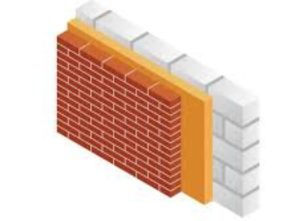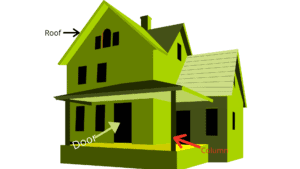Dewatering from construction sites is important to protect materials and maintain a safe workplace. Due to the accumulation of water in the trenches and foundation pits, most construction sites need to be dewatering. There are multiple methods of dewatering to deal with this situation, depending on the excavation depth, the depth of the groundwater table, soil type, environment, season, and many other factors.
What is Dewatering?
Dewatering is the process of removing groundwater and surface water from a construction site. Usually, this procedure is carried out before excavation, or the groundwater level is lowered on site.
Objective of Dewatering
There are two main objectives of dewatering. The first is to prevent excavations below the groundwater level from being submerged by groundwater. The second objective of dewatering is to avoid excavation instability caused by groundwater by controlling the pore water pressure and the effective stress around the excavation.
During the construction process, the foundation pit must be kept free of water. This type of water may come from precipitation, or it may come from any of a variety of sources, such as surface water seeping into the soil, underground streams, habitat water flowing over impermeable soil formations, or adjacent permanent saturated soil areas.
These groundwaters The source comes from multiple sources. Excavation extends below the groundwater table. Some shallow excavations carried out in relatively dry soil conditions may maintain stagnant water without any intervention. But most excavations require some form of dewatering or the extraction of water from the excavation or the surrounding soil.
Causes of Waterlogging on Site
During the rainy season, due to the difference in ground elevation, surface water may accumulate on site. Due to the high groundwater level or rainwater collected in pits, waterlogging may also be found deep in the foundation. Usually, due to the high groundwater level, water is found deep in the foundation. The groundwater level is a saturated zone on the ground. It is at a certain level in the soil stratum due to the infiltration of rainwater or the seepage of groundwater. Due to the high groundwater level, water is constantly compressed and flows upward in the foundation pit, which can cause problems when you excavate the foundation pit or pour concrete.
By providing the necessary slope to the ground or directing water through man-made channels, water on the ground can be easily transferred to other places.
With the help of a mud pump, the rainwater collected in the dug pit can be easily pumped out. It is possible only in the case of waterlogging that is not caused by the groundwater level.
However, if high groundwater levels cause flooding, removing water or silt from the bottom of the foundation will be the most difficult activity. Remember that now it is a challenge not only to remove water but to remove mud or mud. Besides, wet soil may cause a further collapse of the pit wall, creating more soil and more problems and challenges.
Different Methods of Dewatering
Different types of dewatering methods or techniques can be used to dewater the foundation pit. Since each building has a very narrow range of applications, different methods of dewatering at the construction site can be uniquely implemented. Therefore, taking the correct dewatering method for specific ground conditions is always an important and difficult decision. Here, we briefly introduce the dewatering methods.
Sump and pumping Methods of Dewatering
The most common method of dewatering is to remove the water by pumping the water that has accumulated in the pits (called pits) in the low points of the foundation pit. If the amount of groundwater flowing into the excavation is large, or certain types of soil (especially sand and silt) may be softened due to constant seepage, it may be necessary to completely prevent groundwater from entering the excavation. This method is used in shallow excavation areas with high sand or gravel content in the soil. If the excavation area is large, this method can use a trench-a sump with a long and narrow excavation time, which is also the most economical method.
The distance of the drainage ditch is 40 m to 60 m. The size of the cesspit is kept at 1m x 1m x 1m. The water flows into the ditches and collects in the cesspit. Continuously pump water from the water tank.
Well Points Dewatering Method
Well, points are usually used to hold down the groundwater level. These are the vertical sections of the pipe with screen holes at the bottom to prevent soil particles from entering while allowing water to enter. Drill closely spaced well points into the soil around the entire circumference of the excavation. They are connected to horizontal mains and lead to pumps, which continuously pump water from the system and drain water from the construction site. Once the water is pumped to lower the groundwater level in the excavated area, the work can continue.
Educator Dewatering Method
This method is very similar to the WellPoint dewatering method. The only difference is that high-pressure water is used in the riser unit instead of a vacuum to pump water from the wellhead.
This method uses the Venturi tube principle, which is the decrease in fluid pressure caused when a high-pressure fluid flows through a narrow part of a pipe. The high-pressure water supply main pipe feeds water through the venturi above the good screen, thereby reducing the pressure and allowing the water to be pumped through the riser.
High-pressure main water is supplied back to the water. The advantage of using the educator dewatering method is that if multiple pumps are operated from one pump station, the groundwater level can be lowered from a depth of 10-45 m. Therefore, this method becomes economical for soils with low permeability.
Deep Well Method
For excavations that exceed 20 feet (6 m) or deeper and cannot be drained by a pump fixed on the ground, two well point rings may be required. The driving depth of the inner ring is deeper than the driving depth of the outer ring, or It may be necessary to install a deep well single ring with a submersible pump.
According to requirements, deep hole drilling is carried out in suitable 4 to 6 positions. The drilling depth is greater than 40m. The boring tube has a diameter of 20cm or more and is equipped with a powerful submersible pump (10 H.P). A deep well dewatering system can pump more than 3000 gallons of water per minute.
Excavation work requires rapid removal of large amounts of water, and deep well systems are very useful. The performance of the deep well system depends on the permeability of the soil, and it can work under a wide range of soil conditions. The system is specially designed for highly permeable soils, such as sandy soil areas, where groundwater recharge is faster.
Freezing Method
In some cases, well points may not work due to their insufficient capacity to ensure that the foundation pit remains dry; restrictions on groundwater disposal may limit its use; reliability caused by power outages may be an issue; lower groundwater levels Or lowering the groundwater level may cause serious adverse effects on adjacent buildings, which may cause soil consolidation and settlement under its foundation, or expose untreated wooden foundation piles that were previously completely immersed in water to corrosion. In this case, the soil freezing method can be used.
In soil freezing methods of dewatering, a vertical tube array similar to a wellhead is used to continuously circulate the coolant at a low enough temperature to freeze the soil near the excavation area, thereby forming a temporary but reliable groundwater barrier.
The watertight barrier must resist the hydrostatic pressure of the surrounding water. The hydrostatic pressure increases with depth. Therefore, for deeper excavations, a supporting or securing system is required. The watertight barrier also only works when it enters the formation of impermeable soil (such as clay). Otherwise, water may flow under the obstacle and rise into the foundation pit.
In this dewatering method, the area around the excavation is frozen and the soil is transformed into a frozen soil wall. To this end, steel pipes with a diameter of 10 cm to 15 cm, closed from the bottom, are driven into the ground at an interval of 1 m to 1.5 m to surround the area to be excavated. Insert a pipe with a diameter of 2.5cm to 5cm into the large pipe and connect it to the utility pipe connected to the refrigeration equipment. The inserted small tube may be open at the bottom end or it may have a hole end.
The cold refrigerant liquid circulates through the circuit between -23 and -30 degrees. The cold liquid passing through the small tube rises through the large tube. This will cool the larger diameter pipe and freeze the soil around that pipe. Maintaining proper control during this process can develop fairly thick frozen soil walls and can easily excavate enclosed areas.
For larger areas of excavation, the arrangement of pipes should be circular to make full use of the arching effect. For smaller areas, the layout of the pipes should be kept rectangular or square.
Dewatering by Chemical consolidation of soil
In this method, the soil around the area to be excavated is solidified with a compound solution such as soda silicate and calcium chloride. In this method, a pipe similar to a good point is driven into the ground around the area to be excavated. When driving the pipeline, one of these chemicals is forced to pass through the pipeline. Similarly, after reaching the required depth, when the pipe is withdrawn, the second chemical is forced through the pipe. Both chemicals react chemically and solidify the soil.
Also, Read the Bearing Capacity of soil! Importance and Improvement
Electro-osmosis process Method
The fact is that when a direct current is passed through two electrodes driven in saturated soil, the water contained in the soil is repelled by the positive electrode (anode) and attracted by the negative electrode (cathode).
When the cathode electrode is placed in the good point, the anode electrode is placed at the mid-distance between the two well points, and when direct current passes through them, the flow of groundwater to the cathode (ie the good point) will increase, pumping from there side by side Qian achieved the goal of the region.
Constructing Sand Drains
This method is usually used in highway or airport construction. The hourglass is very effective in moist soil. When a thick layer of clay and silt is deposited with organic matter for a long time, the soil becomes muddy. Swamp soil is prone to capillary action and high pore water pressure.
When the wet marsh soil bears the load, water will gradually be pushed out from both sides, causing a piece of land to sink. Sand removal is to avoid this happening on the ground. The diameter of the sand discharge hole usually varies from 300 mm to 450 mm. Place them at a center-to-center distance of 3 to 6 m. The holes for sand removal can be made by pushing steel pipe castings into the ground.
The drainage holes are driven to deeper underground rocks or firm bottoms. The dirt in the pipeline is removed by spraying water. Then fill the pipe with a specific type of sand and withdraw the pipe, leaving the vertical sand pile underground.
A thick layer of sand is spread over the entire area to be consolidated. When the sand layer is loaded, water from the muddy soil is squeezed into the vertical drainage ditch.
Through capillary action, the water rises from the sand discharge hole and spreads into the sand layer formed on top of the ground. From there it can be collected and discharged.
cement grout
This method can prevent rock leakage to the greatest extent. It can also be used to prevent leakage of soft soil. The cement slurry should be easy to apply and uniform. A bag of cement usually uses 30 to 90 liters of water. The grout should not contain cement blocks. The grouting pressure should be maintained according to the cracks of the stone. Portland grout is only suitable for cracks up to 1.6 mm wide.
Stopping leakage from rock
Whenever a soft lump is found in the rock, a hole will be drilled. Regarding the interval depth and size of the holes, there is a hard first rule. Their direction, depth, and inclination vary according to the type of rock. The cement slurry is prepared by adding enough water to the cement, and the borehole is filled with the cement slurry under pressure. Continue the grouting process until no grout comes out of the hole. To avoid rock fracture, the grouting pressure should be changed appropriately. Once the grouting hole is started, it should not be filled.
Stopping leakage from soft soils
If it is soft soil, the channel with the least resistance should be formed before the actual grouting. To do this, drive the two pipes a small distance, and then force water through one of the pipes until water appears in the second pipe.
This creates a channel of least resistance between the two pipes. Similarly, many such channels are formed in the soil. Cement grout is applied through the same pipe that forces water through. Continue cement grouting until grouting appears in the other pipe.
After putting the valve in the pipeline, continue the grouting process. Therefore, the cement slurry is pressed into the soil around the trench to form a waterproof layer and prevent water from leaking into the trench.




